In A Parallel Conversion Strategy The New System
In a parallel conversion strategy the new system. B replaces the old one at an appointed time. FALSE An information systems plan shows how specific information systems fit into a companys overall business plan and business strategy. Replaces the old one at an appointed time.
26 In a parallel conversion strategy the new systemA is tested by an outsourced company. According to the Technology Acceptance Model TAM user perceptions of usefulness and ease of use are major determinants of IT adoption. This is usually done to keep the old system available as a backup until the new system is working satisfactorily.
C and the old are run together. Replaces the old one at an appointed time. E is slowly converted from the old systemAnswer.
41 In a parallel conversion strategy the new system. Parallel Run. 40 In a parallel conversion strategy the new system A.
D is introduced in stages. Parallel conversion involves running both the current and the new system together for some period of time. C and the old are run together for a timeD is introduced only to a limited area first.
C and the old are run together. A typical end user concern about a new system is where the data will be stored. Technology IT side conversion can involve.
D is introduced in stages. Parallel running is a strategy for system changeover where a new system slowly assumes the roles of the older system while both systems operate simultaneously.
Parallel adoption is a method for transferring between a previous system to a target system in an organization.
Conversion from one information system IS to. A is tested by an outsourced company. A typical end user concern about a new system is where the data will be stored. Is tested by an outsourced company. A is tested by an outsourced company. Parallel adoption is a method for transferring between a previous system to a target system in an organization. In a parallel conversion strategy the new system. The process requires careful planning and control and a significant investment in labor hours. A is tested by an outsourced company.
Technology IT side conversion can involve. E is slowly converted from the old systemAnswer. A is tested by an outsourced company. B replaces the old one on an appointed day. Is introduced in stages. According to the Technology Acceptance Model TAM user perceptions of usefulness and ease of use are major determinants of IT adoption. In order to reduce risk the old and new system run simultaneously for some period of time after which if the criteria for the new system are met the old system is disabled.

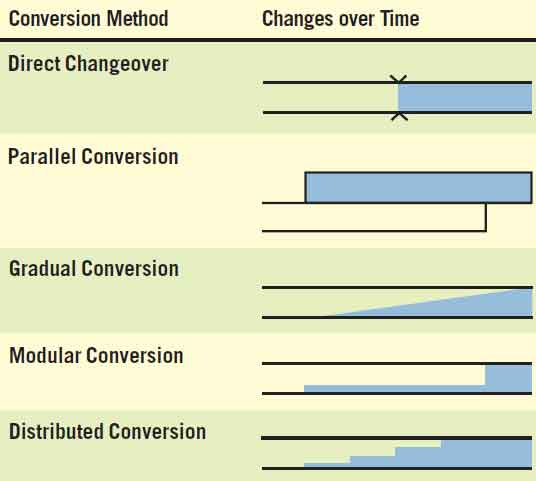
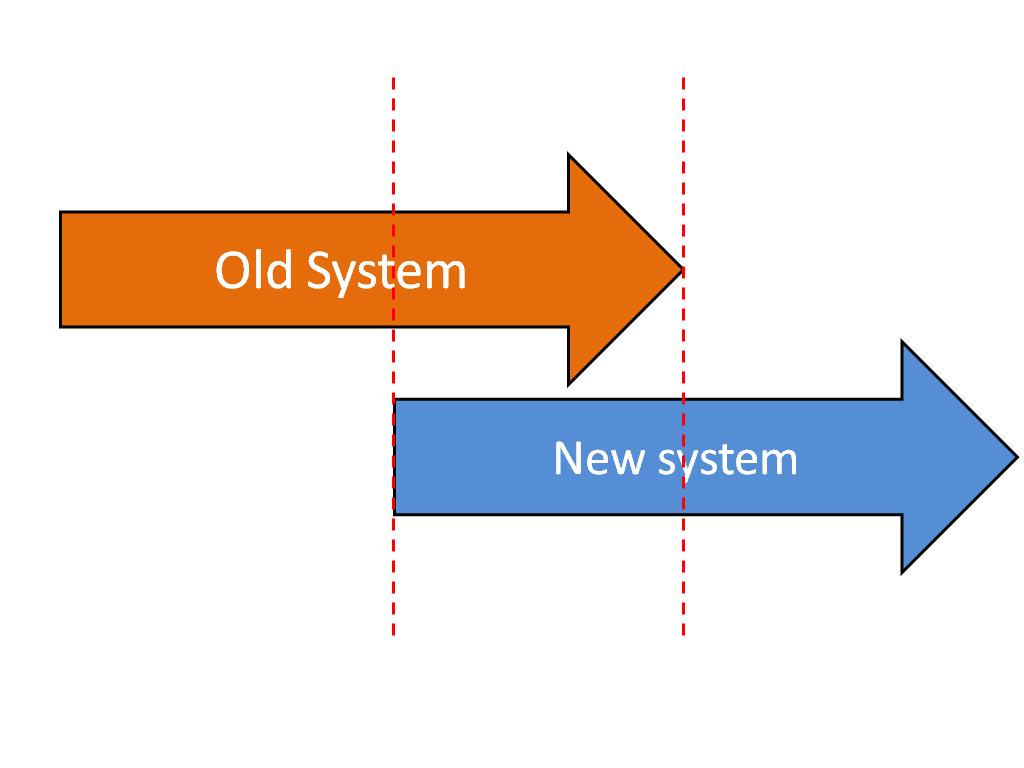



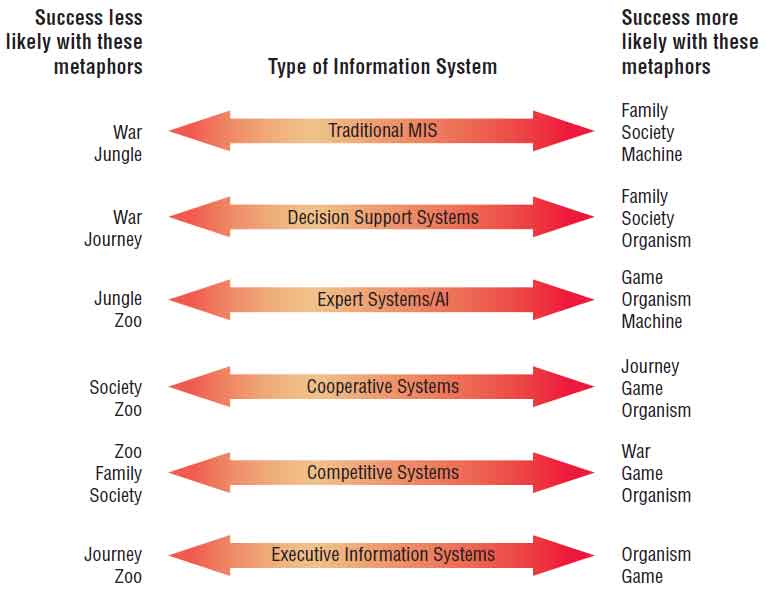
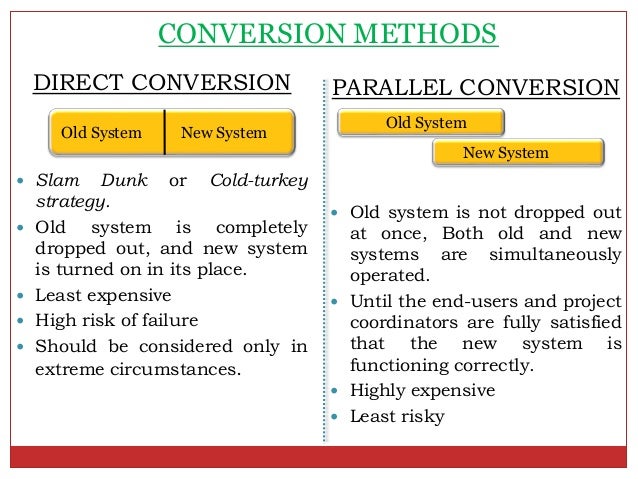
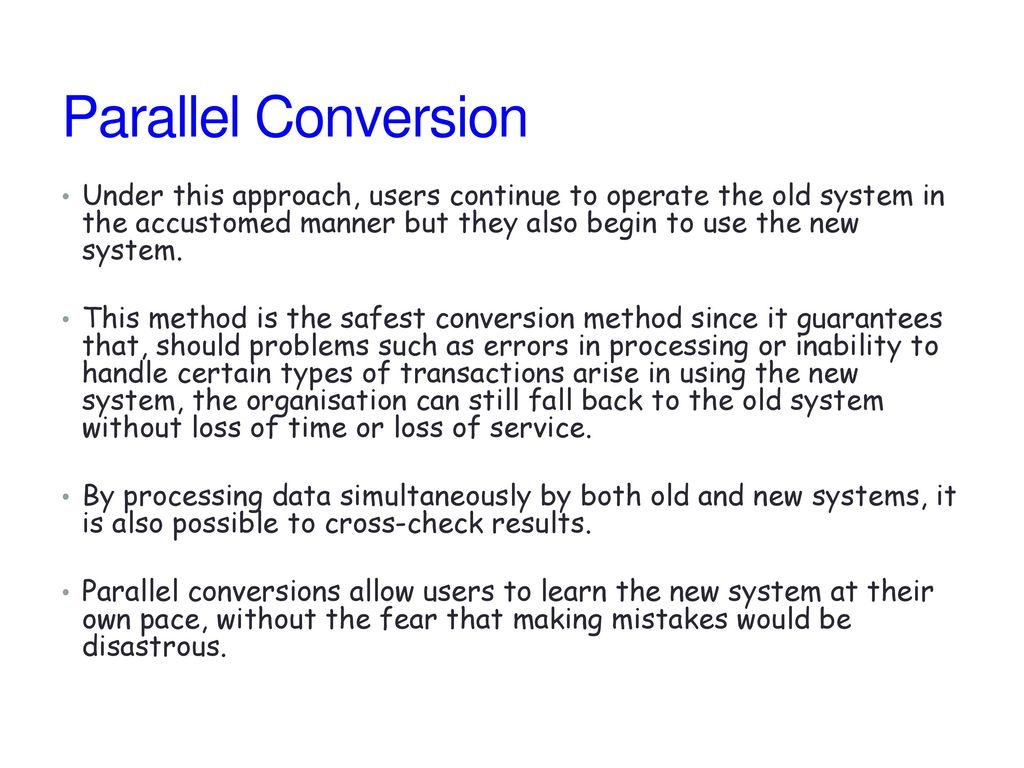
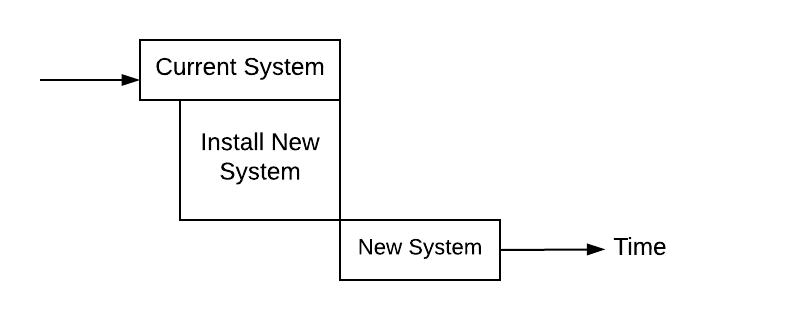






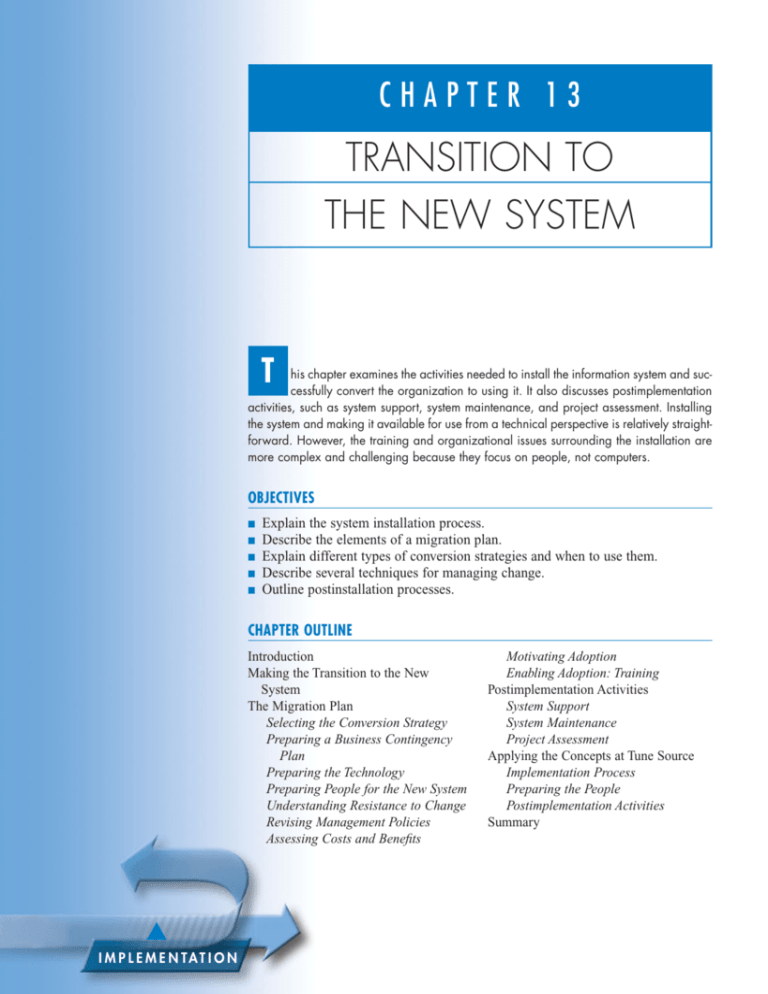



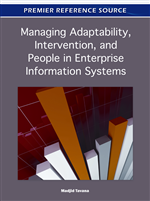









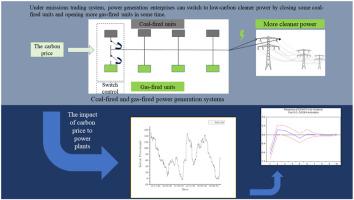



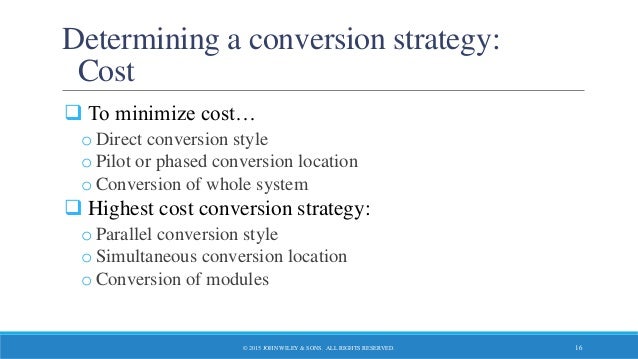






Post a Comment for "In A Parallel Conversion Strategy The New System"